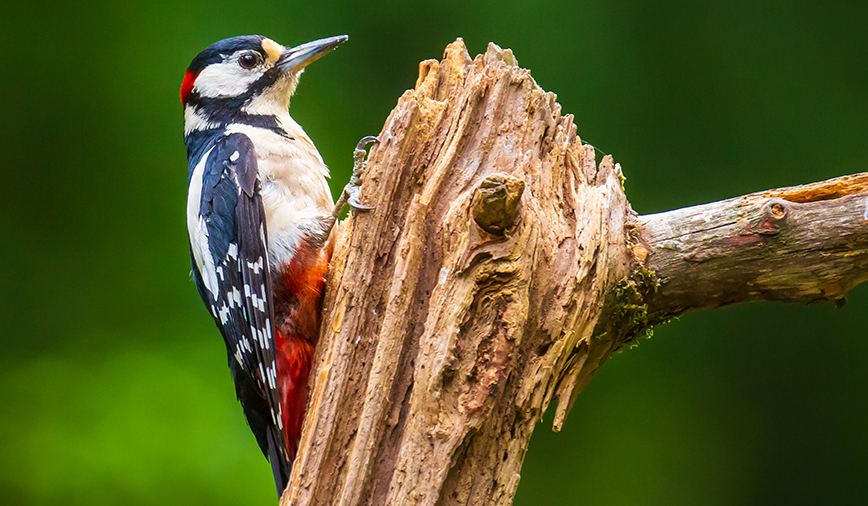Pam’s Perspective
Pam Otto is the Manager of Nature Programs and Interpretive Services for the St. Charles Park District
You’d think I’d know when to leave well enough alone. But no…
Even though the number of phone calls and emails I’ve received regarding woodpeckers has now surpassed the number of calls I get about rodents—the other critters who make themselves too much at home in people’s homes—I just can’t help but write about Picoides one more time.
The motivation this week actually happened on Thursday, around 7 a.m., as I was letting the dogs out for the first of their morning constitutionals. My sleep-fogged brain was just starting to process that it was hearing, for the first time in months, the “what-cheer” song of the Northern cardinal, when it heard another unmistakable sound: the persistent drumming of a woodpecker, banging furiously on a hollow branch to declare his territory.
Normally we hear these songs and sounds a little later, like in February, but with the warmer temperatures we’ve had this winter I suppose we’re all a little off. At any rate, the cardinal soon moved on to other things but the woodpecker was still drumming at 7:30, when I let the dogs out for Round 2. Which then got me to musing, as I always do when I hear drumming, what a remarkable structure the woodpecker’s skull is.
Think about it. What if your lot in life was to bang your head against a tree, or maybe a gutter, any time you wanted to call attention to yourself? The repeated thrashing would soon bruise your delicate noggin, while inside your brain would slosh around, swell and soon cease to function.
Not so the woodpecker. Even after repeated bouts of drumming, with deceleration rates of more than 1000 times the force of gravity each time its beak hits the solid object, a woodpecker retains all its faculties. How can this be?
The secret lies in a series of intricate adaptations woodpeckers have developed over millions of years of head banging.
For one thing, the woodpecker’s brain is packed much more tightly inside its skull than, say, a human brain, which has a fair amount of space around it. With less room to move around, there’s less chance of injury.
Second, woodpecker brains are longer from top to bottom than they are from front to back. Such a design means that the force from an impact is spread over a larger surface area, as compared to a human brain, and trauma is thus minimized.
The bird’s brain also benefits from bones with spongy structures that help diffuse the force of impact. Think of the last time you packed a delicate object. Did you toss it in a box and hope for the best, or did you nestle it in a container and surround it with soft packing material?
(Continued on Page 2)
Pam’s Perspective – Page 2
Finally, woodpeckers are blessed with a highly adapted hyoid bone. In humans, this strap-like bone is positioned just above the Adam’s apple, and aids in swallowing. But in woodpeckers, it extends from the base of the beak all the way around the skull. It acts like a safety belt to absorb force as the bird slams its head against a tree.
Researchers in China have been studying these diverse parts of the woodpecker skull, with the hope that their findings might one day be used to design better head protection for humans.
What I’m hoping is that someone will study the way a naturalist’s brain works, with the hope that their findings might one day protect us all from the onslaught of nature-related thoughts that occur in the morning, even before the coffee kicks in.
Pam Otto is the manager of nature programs and interpretive services for the St. Charles Park District. She’s also curious as to whether the arrival of emerald ash borers in our area might be leading to a localized increase in woodpecker numbers. Do you think you have more woodpeckers in your neighborhood than in years past? Let her know. She can be reached at 630-513-4346 or potto@stcparks.org.

